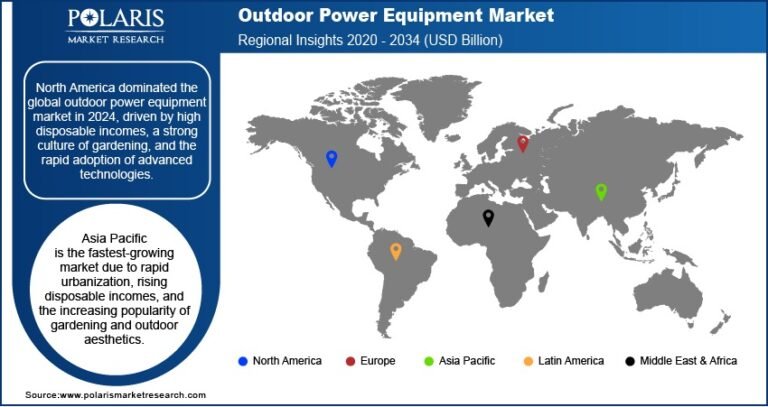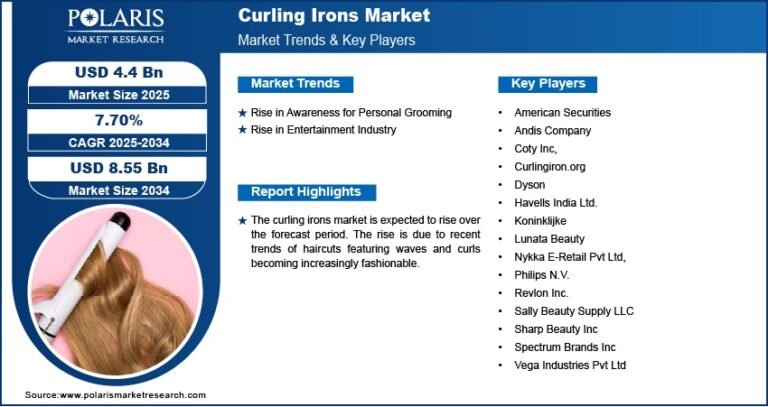Quantum Dot Display Market Expected to Reach USD 13.33 Billion by 2034, Growing at a CAGR of 10.3%

Global Quantum Dot Display Market size and share is currently valued at USD 5.01 billion in 2024 and is anticipated to generate an estimated revenue of USD 13.33 billion by 2034, according to the latest study by Polaris Market Research. Besides, the report notes that the market exhibits a robust 10.3% Compound Annual Growth Rate (CAGR) over the forecasted timeframe, 2025 – 2034
Market Definition
The Quantum Dot Display Market is revolutionizing visual technology by offering displays with enhanced brightness, color accuracy, and energy efficiency. Quantum dots are semiconductor nanocrystals that emit specific light wavelengths when stimulated, making them ideal for next-generation TVs, monitors, and mobile devices. Their use in LCD panels significantly improves color gamut and contrast without sacrificing energy performance. Demand is driven by consumer desire for premium visual experiences, the rise of 4K and 8K content, and adoption in high-end electronics. Major tech companies are investing heavily in quantum dot R&D, leading to innovations like QLED and hybrid OLED-quantum dot displays. However, the market faces challenges including high production costs, toxic elements like cadmium in some formulations, and competition from emerging technologies such as MicroLED. As manufacturing becomes more cost-efficient and environmentally friendly alternatives are developed, quantum dot displays are expected to gain a larger market share, becoming a standard in consumer electronics.
Key Report Highlights
- The report highlights the key region that accounts for the highest revenue share in the global Quantum Dot Display market.
- It identifies the leading country within this region that makes a significant contribution to the market’s overall performance.
- The report outlines the dominant segment that holds a major share of the market.
- It also emphasizes the fastest-growing segment projected to gain strong traction during the forecast period.
- Qualitative and quantitative market analysis have been used to provide an in-depth understanding of the market.
Market Overview: Key Figures at a Glance
- Market Value in 2024: USD 5.01 billion
- Projected Market Size in 2034: USD 13.33 billion
- Anticipated CAGR (2025-2034): 10.3%
Get access to the full report or request a complimentary sample for in-depth analysis:
Market Growth Drivers
The quantum dot display market is being propelled by growing consumer demand for enhanced visual experiences in televisions, monitors, and mobile devices. Quantum dots enable displays with higher brightness, improved color accuracy, and greater energy efficiency compared to traditional LCD and OLED technologies. Leading electronics manufacturers are incorporating quantum dot layers into next-gen display panels to achieve ultra-high definition and HDR capabilities. The rapid evolution of streaming, gaming, and digital content consumption is further boosting demand for premium displays. Additionally, quantum dots are non-organic and less prone to degradation, enhancing device longevity. Continuous R&D in cadmium-free quantum dots and integration with microLED and QD-OLED technologies are expanding use cases. As 8K and foldable display trends rise, manufacturers are investing heavily in quantum dot innovations to differentiate their products. Government funding for nanotechnology and materials science is also contributing to growth in the quantum dot display ecosystem.
Market Key Players
The competitive landscape features a mix of long-standing companies and emerging contenders. Leading players are actively pursuing R&D initiatives and strategic moves to strengthen their market position. Notable participants include
- InVisage Technologies (Apple)
- Nanoco Group plc
- NN-Labs (NNCrystal US Corporation)
- Ocean NanoTech
- QD Laser
- QLight Nanotech
- Quantum Materials Corporation
- SAMSUNG
- Shoei Electronic Materials, Inc.
- The Dow Chemical Company
- Toshiba






